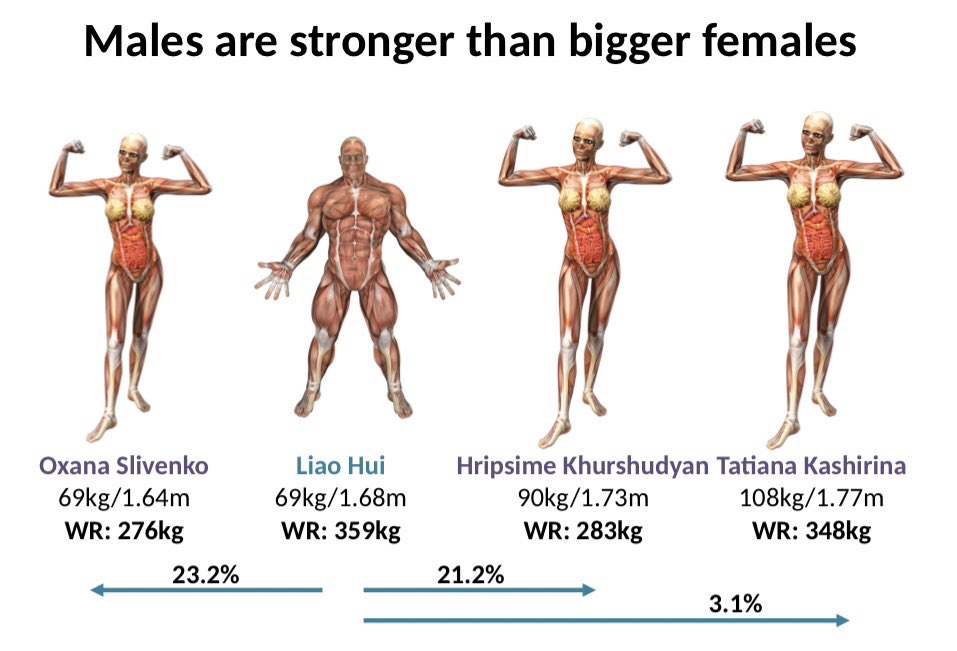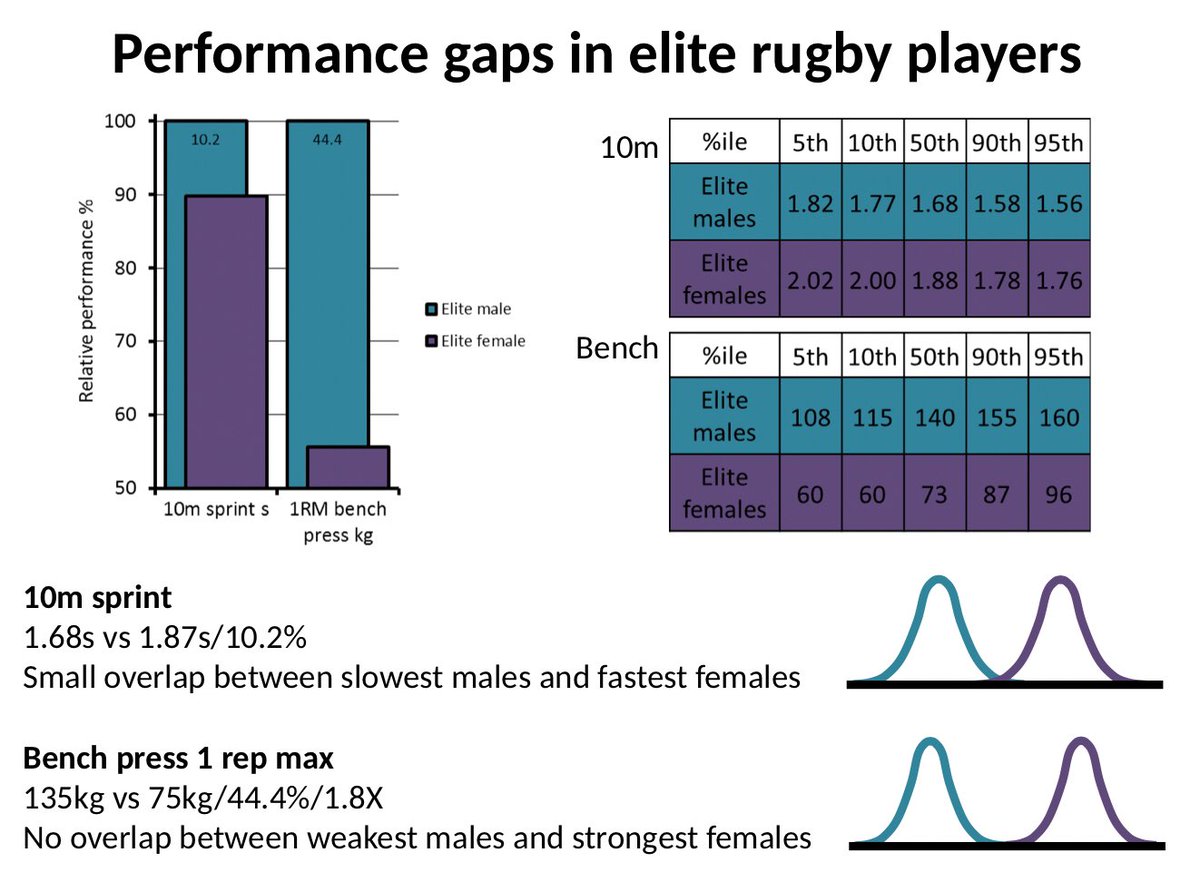Injury risk is a function of size, speed and, perhaps most significantly, strength. https://twitter.com/genderintell/status/1296376000402599937">https://twitter.com/genderint...
If one considers only people of typical mass (height, weight), the injury risk of a male on female tackle is increased by 20-30%.
That’s only modelling mass.
That’s only modelling mass.
That male on female tackle risk doesn’t account for the 10% speed bonus or the 40-60% strength bonus the typical male possesses.
These factors will compound the mass risk, possibly synergistically. The punch force a male can develop is 160% higher than in females, a value that appears to exceed the individual sums of muscle size, shoulder/upper arm strength etc. (Morris et al, 2020).
There is now ample data that transwomen, after one year of T suppression, reduce from typical male muscle mass/strength by maybe 5%.
This is insufficient to reduce the injury risk in a tackle to acceptable levels.
This is insufficient to reduce the injury risk in a tackle to acceptable levels.
When one introduces a size disparity (a larger than average male tackling a smaller than average female), the risk of injury to the female is modelled as high as 60%.
Remember, a larger than an average male will almost certainly be stronger than average too.
Remember, a larger than an average male will almost certainly be stronger than average too.
One could argue reduced risk when a smaller than average male tackles a larger than average female.
While the risk conferred by mass should be smaller, remember that even very small males are stronger than very large females.
While the risk conferred by mass should be smaller, remember that even very small males are stronger than very large females.
See weightlifting records for an illustration of this. A 69kg male can out lift a 108kg female.
Among rugby players, there is no statistical overlap in strength, measured as bench press 1RM, between elite males and females.
Among rugby players, there is no statistical overlap in strength, measured as bench press 1RM, between elite males and females.
Sloganeering ‘no risk’ isn’t adding anything. It’s asserting a position with no evidential base.
World Rugby have worked incredibly hard to model and understand the evidential base for injury risk in contact rugby, and how that can be translated to the biology of transwomen.
World Rugby have worked incredibly hard to model and understand the evidential base for injury risk in contact rugby, and how that can be translated to the biology of transwomen.

 Read on Twitter
Read on Twitter



